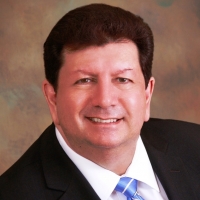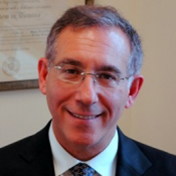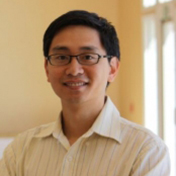I received a reply from my State Labor Department specifying that we would not qualify as a TEA. I would like to know if setting up a regional center for our “Inn” development would still qualify for the $500,000 investment level. We are located in a rural area east of Pittsburgh, PA and yet are designated as part of the Metropolitan statistical area of Pittsburgh. Thank you.
Answers

Bernard P Wolfsdorf
EB-5 Immigration attorneysIf the unemployment rate is 150% of the national average, you can qualify.

Ying Lu
EB-5 Immigration attorneysYou must be a high unemployment area or rural area in order to qualify as TEA. TEA relying on high unemployment rate may change when the government updates their statistic. If your regional center loses the TEA status, the investment amount should be 1 million. You may want to consult a qualified attorney or economist to see if the area can be a TEA again by including more or less adjacent areas. You need to file an amendment with USCIS if the range of the geographical area changes.

Julia Roussinova
EB-5 Immigration attorneysA Regional Center cannot qualify for a reduced investment $500,000 unless in a TEA or rural area. Rural area test is met if the investment is located outside a standard MSA and in a city or town outside MSA with a population of no more than 20,000 based on the most recent decennial census of the US. MSAs are geographic areas defined by the US Office of Management and Budget. Statistics on a city or town population are obtained from the US Census Bureau. If you are designated as within MSA of Pittsburgh, it is unlikely you may qualify for a rural area designation. However, an EB-5 economist may be instrumental in providing analysis and opinion. It is also possible to qualify for a reduced $500,000 if you partner with an established Regional Center if it is qualified for a reduced investment amount.

Daniel A Zeft
EB-5 Immigration attorneysNo, a regional center cannot obtain investments of $500,000 if the EB-5 business project is not located in a TEA.

Boyd Campbell
EB-5 Immigration attorneysNo, it cannot qualify for the $500,000 amount unless located within a TEA.

Ed Beshara
EB-5 Immigration attorneysThe TEA designation allows an investment of $5000,000.00. An experienced EB-5 economist may assist in reviewing and analyzing relevant county data supplied by the State to determine if a certain geographical area qualifies as a TEA.

Jinhee Wilde
EB-5 Immigration attorneysNo, the $500,000 investment for EB-5 is an exception to the rule only if the project or business enterprise is located in TEA or in a rural area of less than 20,000 population. Normal rule for investment under EB-5 is $ 1 million unless you could qualify for these exceptions. Since your business enterprise is within the Metro area of Pittsburgh, you will not qualify for Rural exception. As it does not qualify for TEA according to SLD, your project could only do EB-5 if the investors invest the full $ 1 million.

Steven Anapoell
EB-5 Securities AttorneysYour job creating entity/project must be in a TEA for 500k investors.

Philip H Teplen
EB-5 Immigration attorneysWe can also qualify an area by population of less than 20,000 per census track.

Lei Jiang
EB-5 Immigration attorneysNo. You will not qualify for $500,000. You have to be in a rural area or a high unemployment area. Please feel free to contact me for EB5 questions.

Shahzad Q Qadri
Creating EB-5 Regional CentersUnfortunately, in order to qualify for the $500k investment you have to fall within a TEA and/or be a rural area. The rural designation is made by the feds. However, if you are in a MSA it is highly improbable that you will qualify for a rural designation.

Jor Law
Creating EB-5 Regional CentersNo. The only thing that qualifies a $500,000 investment instead of the usual $1,000,000 investment is TEA designation. There is a common misconception that involvement of a Regional Center provides this, but the Regional Center only enables the inclusion of indirect and induced job creation numbers.

Roberto Ortiz
EB-5 Immigration attorneysI would have to look at all of the information to determine if you can do it. Another option is to join an existing Regional Center in your area. If you have any other questions, please do not hesitate to contact me. Thank you.

Stephen Berman
EB-5 Immigration attorneysIf your area is not one of high unemployment, you cannot qualify as a regional center.

Fredrick W Voigtmann
EB-5 Immigration attorneysNo. Regional center designation has nothing to do with the required amount of capital ($1 million vs. $500,000). The lower amount of investment is allowed only when the new commercial enterprise (and job creating entity) is located within the geographic boundaries of a targeted employment area (TEA), whether or not within a regional center.

Mahsa Aliaskari
EB-5 Immigration attorneysThe $500,000 investment level is available only for projects that are in a TEA, Regional Center designation does not have an impact on this requirement.

Reza Rahbaran
EB-5 Immigration attorneysNo. Projects located outside a Targeted Employment Area (TEA) do not qualify for the reduced investment threshold. Each investor would need to invest at least $1,000,000.00, however, the project would be able to count indirect and induced jobs if it is under a regional center umbrella. For further information please contact Rahbaran & Associates.

Julie Daniel
EB-5 Immigration attorneysUnfortunately no, but sometimes with the right economist there can be some creativity.

Jeffrey E Campion
Creating EB-5 Regional CentersMost likely, no. I''d recommend that you speak with an attorney specialized in those issues.

Michael A Harris, Esq
EB-5 Immigration attorneysUnfortunately no. Currently it is either a $500,000 investment or $1 million investment for regional centers. While the law states that a TEA can be less than $1 million, it cannot be less than $500,000. But for this to happen the government would have to implement that change. Otherwise, have you submitted only one U.S. census tract to the Pennsylvania government for consideration? Or did you try to ''gerrymander'' the tracts into a contiguous area and then try to achieve a TEA designation by the state? A TEA need not be designated by the state for it to be a high unemployment TEA (though preferred) as USCIS can consider it.

Clem Turner
EB-5 Securities AttorneysIf you are unable to get the state of Pittsburgh to designate your location as a TEA, you will not be able to qualify for the reduced $500,000 minimum - which would be a very large marketing hurdle to overcome. If you would like a referral to a "TEA Specialist" please free free to contact me.

Susan Pilcher
EB-5 Immigration attorneysAlthough a rural area could qualify as a "TEA," and thus support $500,000 investments, even without a state TEA designation letter, being located within an MSA put you outside the legal definition of a "rural area" for TEA purposes.

Daniel P Hanlon
EB-5 Immigration attorneysNo, it cannot qualify for that investment amount.

DISCLAIMER: the information found on this website is intended to be general information; it is not legal or financial advice. Specific legal or financial advice can only be given by a licensed professional with full knowledge of all the facts and circumstances of your particular situation. You should seek consultation with legal, immigration, and financial experts prior to participating in the EB-5 program. Posting a question on this website does not create an attorney-client relationship. All questions you post will be available to the public: do not include confidential information in your question.






